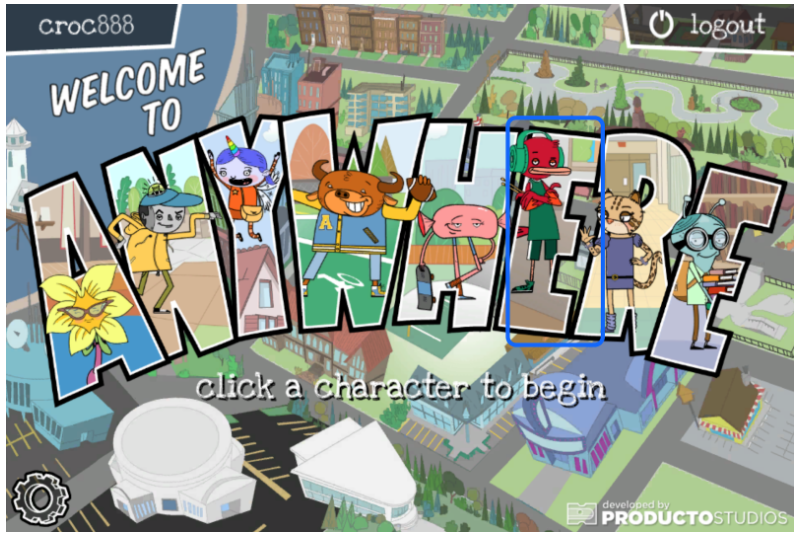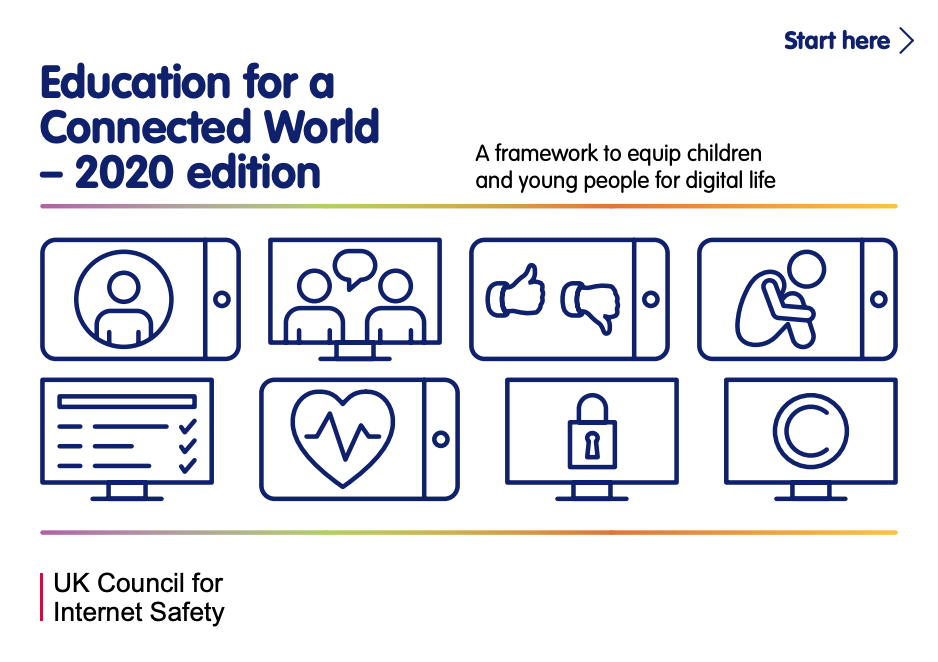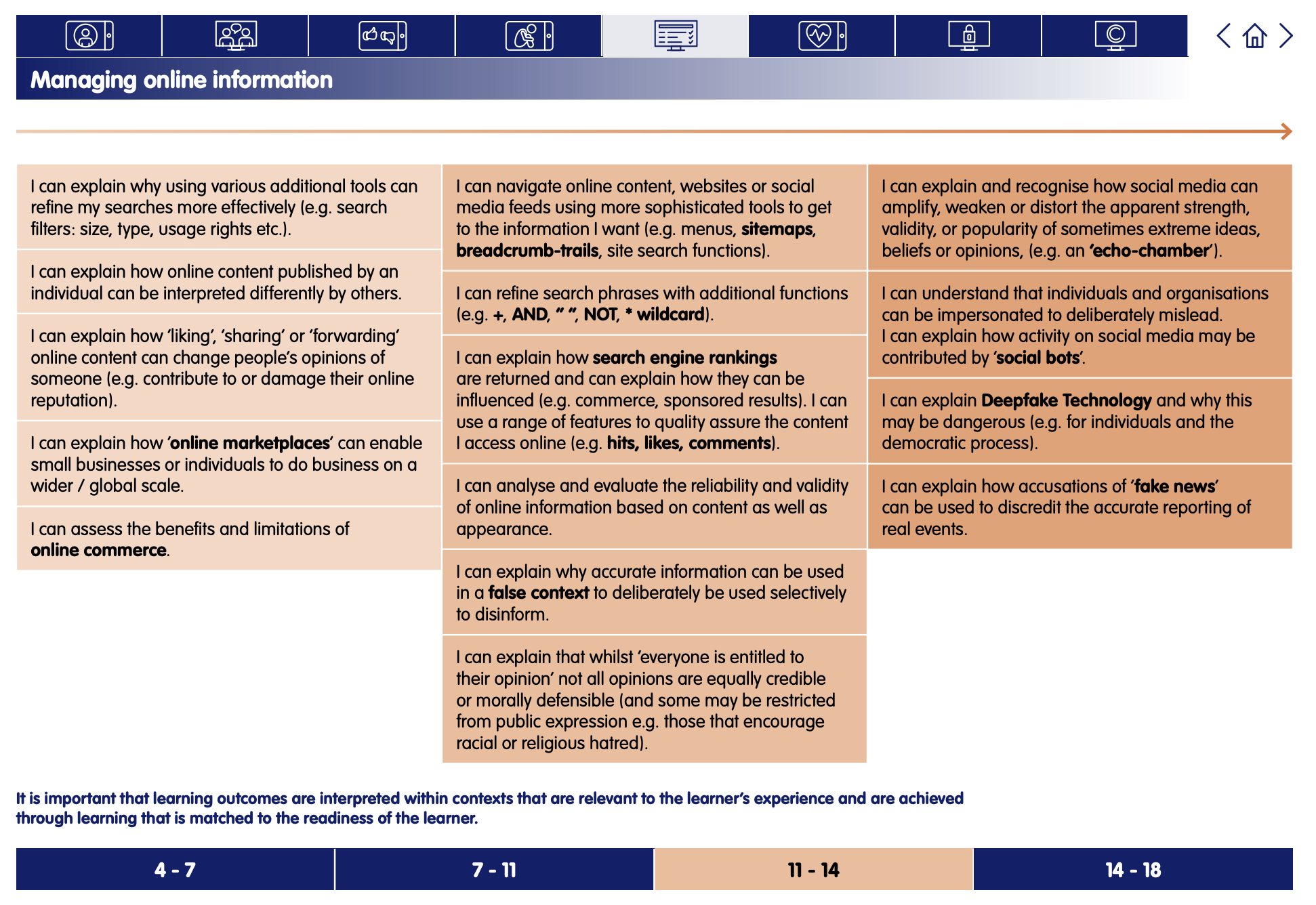Finding Credible News
Digital Literacy and Online Safety (Y7) - Lesson 6
A note about this lesson

This lesson is taken from Common Sense Education’s excellent Digital Citizenship curriculum. Their resources are shared for free under A Creative Commons Attribution- NonCommercial- NoDerivatives 4.0 International License.
You can find the original resources HERE.
Objectives
- Learn reasons that people put false or misleading information on the internet.
- Learn criteria for differentiating fake news from credible news.
- Practice evaluating the credibility of information they find on the internet.
Lesson 1 - Finding Balance in a Digital World
Lesson 2 - Don’t feed the Phish
Lesson 3 - Who are you online?
Lesson 4 - Chatting Safely Online
Lesson 5 - Digital Drama Unplugged
Lesson 6 - Finding Credible News
Links to Education for a Connected World.
This lesson from Common Sense Media's Digital Citizenship curriculum links to the following strands from the Managing online information section of the Education for a Connected World framework.
Introduction - Tricky Wiki
At the beginning of (or before) the lesson, have students complete the Far-Fetched Facts storyline in Digital Compass™ by Common Sense Education. This will help introduce key concepts of this lesson. To see more, check out the Digital Compass Educator Guide.

Note to teachers: The News or Fake News? handout contains active links to news sources, which learners will review and analyse. If you are going to print out the handouts for learners to complete, you will also need to print out the linked news sources. Example 3 is from a fictitious news source and can be accessed from the link in the lesson.
Ask: Has anyone here heard that a dangerous chemical called "dihydrogen monoxide" is coming out of our taps? Allow learners to respond without giving away that this information is a hoax.
Tell learners that you just read some disturbing news about the dangers of dihydrogen monoxide. You never considered that dihydrogen monoxide could be dangerous until you read it in an online encyclopedia. Project Slide 4 and have a student read the article text aloud.
Ask: Is anyone surprised by this? Or did you already know this about dihydrogen monoxide? Allow learners to respond. Acknowledge that this information may not be true and ask: How could it be on a site like Wikipedia if it's not true?
Allow learners to respond, and reveal that this information came from an imitation site and is meant to be a joke as dihydrogen monoxide is another term for water. Explain that there are many situations where information that you find on the internet can look credible but actually may not be. Define credible as able to be believed; trustworthy. (Slide 5)
Project Slide 6 and say: People put information that may not be fully true online all the time. Have learners read each of the categories aloud (editorials, satire and hoaxes).
Say: Today we're going to talk about strategies you can use to figure out when information on the internet is credible and when it's not.
News or Fake News?
Say: Fake news can be tricky -- sometimes it's really hard to tell. To figure it out, you have to do some investigation. Distribute the News or Fake News? handout and read the directions aloud. Define evaluate as to carefully examine something to figure out its value. (Slide 7)
Have learners read the "Internet Investigator Checklist" silently.
- For the second item on the checklist, explain that bias means having a preference for one thing over another in a way that's unfair (Slide 8). Explain that someone can be biased in favour of others or against them and that it is unfair in either case because the belief is subjective and not based on fact.
- For the third item, explain that corroboration means an additional source that confirms or supports a news story, article or piece of information. (Slide 9)
Have learners click on the first article in the table.
Note: Because this lesson involves using third-party websites, including sites that run ad content, we recommend you preview the sites before sharing them with your learners.
Explain that you will model doing the example for them. Project Slide 10 and click on the link to open the article. Do a think-aloud to model a close reading of the text ("I see ______________, and that makes me think ______________."). Narrate your thoughts as you take each of the following steps:
- Scan the text features of the article (headline, subheadings, byline, pictures, captions, bolded words, graphics, etc.).
- Identify webpage elements that are not part of the article (ads, sponsored content, etc.).
- Read the introduction to the article (everything up to the first subheading).
Summarise the main idea and any information that stands out by typing into the "Read closely" column on Slide 10. Have learners fill in their handouts at the same time. Use the Teacher Version to support your answers.
Repeat Steps 3–4 for each of the remaining two columns, using the following steps:
A: Analyse the source.
- Identify the owner of the site by looking at the site header and the URL ("BBC"). Scroll to the bottom footer of the news article and click the "About Us" link to learn more about the organisation.
- Do a Google search on the site owner's name, and review the results to see what other sites say about this site. Note that you are not just clicking the top result and avoiding clicking “sponsored” results but also looking down the list for credible sources. The Wikipedia entry is a good place to start, especially the "References" section, which links out to primary sources.*
- Do a Google search on the author's name (also add the source name "BBC" to help narrow down results), and review the results to see what other types of articles the author has written.
B: Look for corroboration.
Do Google searches on some of the article's key points, including:
- Uniform policy East Sussex
- Lewes Priory School protest 2019
- Should school uniforms be gender neutral? (See if any surveys have been conducted or research been published)
*Note: If time allows, use this step as an opportunity to address bias in a more substantial way. Ask: Does this website or author seem to have beliefs or experiences that would influence their position on this topic? Does this bias seem to influence what they've written?
Ask: Now that you've analysed the first article, what do you think? How credible is it?
Call on learners to share their views. Prompt learners to use and weigh the checklist criteria to answer whether the article makes sense, that it is from a credible source and that can be corroborated. Highlight any ideas that call into question the article's credibility. Project Slide 11 and explain that if you can answer yes to all the questions on the checklist, then the article likely is credible news. If not, it may be fake news or at least questionable and in need of further research.
Have learners complete the "How Credible?" question independently and then work in pairs to complete Examples 2 and 3 on the News or Fake News? handout.
Extension Activity
Have students apply what they have learned by completing the "News in Social Media" Activity on TestDrive, a social media simulator. Students go through a self-guided activity to reinforce key concepts and practice managing online identities. For more information, download the Social Media TestDrive Educator Guide.
Plenary - Fighting Fake
Use the Teacher Version to review Examples 2 and 3 from the handout.
- For Example 2, when you review "Analyze the Source," highlight that this source is likely biased on this topic. Explain that the National Youth Rights Association has a history of advocating for the protection and expansion of youth rights, which means they likely will have a bias in favor of lowering the voting age.
Assign the Google Classroom Quiz (and view student results via the quiz link). Or, adapt the Teacher Version for your own quiz tool.
Send home the Family Activity and Family Tips.


